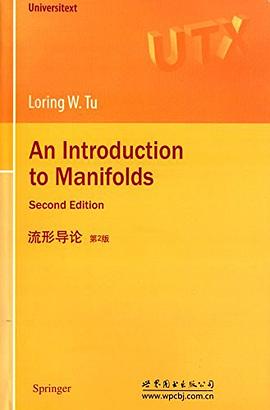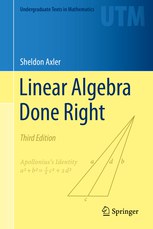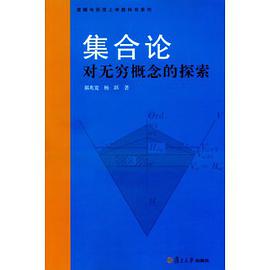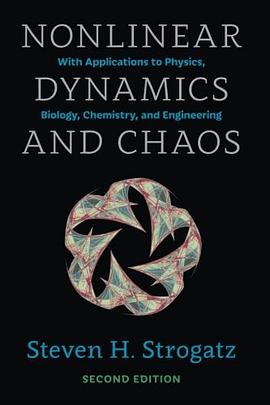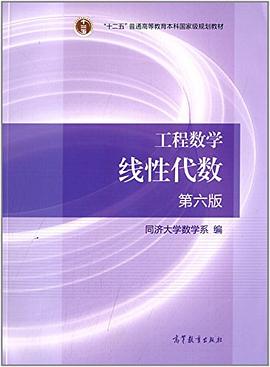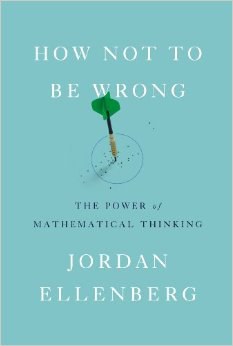

Introductory Example: Linear Models in Economics and Engineering
1.1 Systems of Linear Equations
1.2 Row Reduction and Echelon Forms
1.3 Vector Equations
1.4 The Matrix Equation Ax = b
1.5 Solution Sets of Linear Systems
1.6 Applications of Linear Systems
1.7 Linear Independence
1.8 Introduction to Linear Transformations
1.9 The Matrix of a Linear Transformation
1.10 Linear Models in Business, Science, and Engineering
Supplementary Exercises
2. Matrix Algebra
Introductory Example: Computer Models in Aircraft Design
2.1 Matrix Operations
2.2 The Inverse of a Matrix
2.3 Characterizations of Invertible Matrices
2.4 Partitioned Matrices
2.5 Matrix Factorizations
2.6 The Leontief Input—Output Model
2.7 Applications to Computer Graphics
2.8 Subspaces of Rn
2.9 Dimension and Rank
Supplementary Exercises
3. Determinants
Introductory Example: Random Paths and Distortion
3.1 Introduction to Determinants
3.2 Properties of Determinants
3.3 Cramer’s Rule, Volume, and Linear Transformations
Supplementary Exercises
4. Vector Spaces
Introductory Example: Space Flight and Control Systems
4.1 Vector Spaces and Subspaces
4.2 Null Spaces, Column Spaces, and Linear Transformations
4.3 Linearly Independent Sets; Bases
4.4 Coordinate Systems
4.5 The Dimension of a Vector Space
4.6 Rank
4.7 Change of Basis
4.8 Applications to Difference Equations
4.9 Applications to Markov Chains
Supplementary Exercises
5. Eigenvalues and Eigenvectors
Introductory Example: Dynamical Systems and Spotted Owls
5.1 Eigenvectors and Eigenvalues
5.2 The Characteristic Equation
5.3 Diagonalization
5.4 Eigenvectors and Linear Transformations
5.5 Complex Eigenvalues
5.6 Discrete Dynamical Systems
5.7 Applications to Differential Equations
5.8 Iterative Estimates for Eigenvalues
Supplementary Exercises
6. Orthogonality and Least Squares
Introductory Example: The North American Datum and GPS Navigation
6.1 Inner Product, Length, and Orthogonality
6.2 Orthogonal Sets
6.3 Orthogonal Projections
6.4 The Gram—Schmidt Process
6.5 Least-Squares Problems
6.6 Applications to Linear Models
6.7 Inner Product Spaces
6.8 Applications of Inner Product Spaces
Supplementary Exercises
7. Symmetric Matrices and Quadratic Forms
Introductory Example: Multichannel Image Processing
7.1 Diagonalization of Symmetric Matrices
7.2 Quadratic Forms
7.3 Constrained Optimization
7.4 The Singular Value Decomposition
7.5 Applications to Image Processing and Statistics
Supplementary Exercises
8. The Geometry of Vector Spaces
Introductory Example: The Platonic Solids
8.1 Affine Combinations
8.2 Affine Independence
8.3 Convex Combinations
8.4 Hyperplanes
8.5 Polytopes
8.6 Curves and Surfaces
9. Optimization (Online Only)
Introductory Example: The Berlin Airlift
9.1 Matrix Games
9.2 Linear Programming–Geometric Method
9.3 Linear Programming–Simplex Method
9.4 Duality
10. Finite-State Markov Chains (Online Only)
Introductory Example: Googling Markov Chains
10.1 Introduction and Examples
10.2 The Steady-State Vector and Google's PageRank
10.3 Communication Classes
10.4 Classification of States and Periodicity
10.5 The Fundamental Matrix
10.6 Markov Chains and Baseball Statistics
Appendices
A. Uniqueness of the Reduced Echelon Form
B. Complex Numbers
· · · · · · (收起)
具體描述
With traditional linear algebra texts, the course is relatively easy for students during the early stages as material is presented in a familiar, concrete setting. However, when abstract concepts are introduced, students often hit a wall. Instructors seem to agree that certain concepts (such as linear independence, spanning, subspace, vector space, and linear transformations) are not easily understood and require time to assimilate. These concepts are fundamental to the study of linear algebra, so students' understanding of them is vital to mastering the subject. This text makes these concepts more accessible by introducing them early in a familiar, concrete Rn setting, developing them gradually, and returning to them throughout the text so that when they are discussed in the abstract, students are readily able to understand.
用戶評價
##疫情期間懶得看錄播就隻看書自學也能理解完全的書…給的例子真好啊…15天過完6個chapter還是太恐怖瞭…讓我Block Break的時候再慢慢讀完它
評分後悔沒有用這本書來入門,學習綫代應該從直觀的幾何理解再到嚴謹抽象的代數概念。我的學習恰好反過來,數學係的高等代數嚴謹抽象,證明詳細,對於入門來說,角度有些太高。這本書有著豐富的例子圖像,以及綫代在各個領域的實際應用,對於一些重要的定理也有粗略的證明,簡直不要太棒!!
評分##內容組織的非常好,難度循序漸進,清晰閤理,同時又有很多實際應用上的例子,讀起來非常的有趣。比國內那些垃圾綫代教材不知道高到哪裏去瞭。
評分##疫情期間懶得看錄播就隻看書自學也能理解完全的書…給的例子真好啊…15天過完6個chapter還是太恐怖瞭…讓我Block Break的時候再慢慢讀完它
評分##第一章基本讀的它,後來轉第四版瞭。但附錄不錯,有空學學說到的matlab。
評分##寫的很好,概念非常清楚,非常好的入門和工具書,exercise也充足。但是prof沒有講完chapter7+8 ,還得補。(總成績不是A係列……計算能力渣渣
評分##前7章打基礎,第8/9/10三個章節需要重點反復讀,當然內容並不基礎。
評分##由於時間和精力,隻做瞭PRACTICE PROBLEMS部分,EXERCISES隻挑瞭幾題做。書中的第9章和10章是網絡上的章節,可惜原書並未收錄,所以隻是看看章節名而已。 不過也是從頭到尾翻瞭一遍,這確實是本好書,甩國內絕大部分教材幾條街,至此也是重新學瞭下綫性代數瞭。
評分##????
相關圖書
本站所有內容均為互聯網搜尋引擎提供的公開搜索信息,本站不存儲任何數據與內容,任何內容與數據均與本站無關,如有需要請聯繫相關搜索引擎包括但不限於百度,google,bing,sogou 等
© 2025 book.teaonline.club All Rights Reserved. 圖書大百科 版權所有




